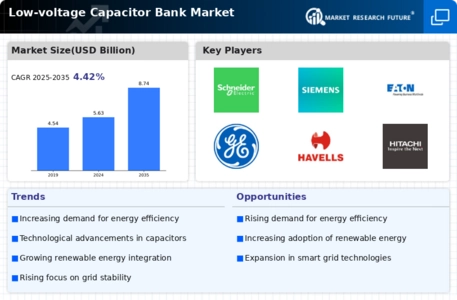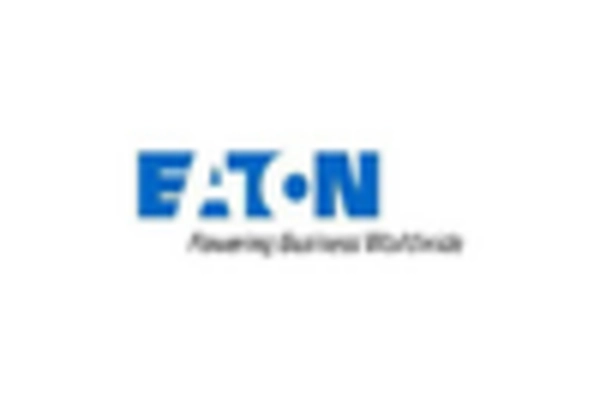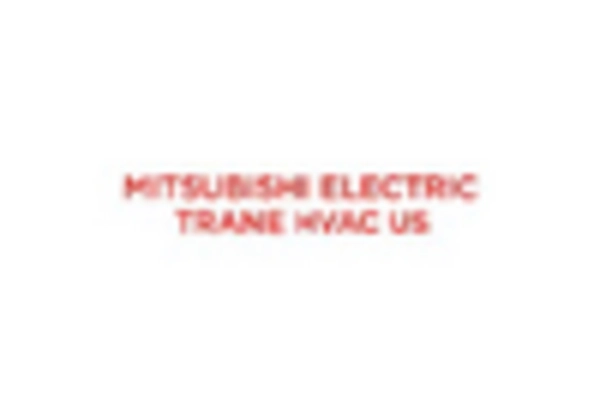Rising Energy Costs
The escalating costs of energy are compelling businesses to seek solutions that enhance energy efficiency, thereby driving the Low-voltage Capacitor Bank Market. As energy prices continue to rise, organizations are increasingly investing in technologies that can help reduce their energy consumption and costs. Capacitor banks serve as a viable solution by improving power factor and minimizing energy losses. This trend is particularly evident in sectors with high energy demands, where even minor improvements in efficiency can lead to substantial cost savings. Consequently, the rising energy costs are likely to sustain the growth momentum of the Low-voltage Capacitor Bank Market.
Increasing Industrialization
The ongoing trend of industrialization across various sectors appears to be a primary driver for the Low-voltage Capacitor Bank Market. As industries expand, the demand for efficient power management solutions intensifies. Capacitor banks play a crucial role in enhancing power factor and reducing energy losses, which is vital for maintaining operational efficiency. In recent years, the manufacturing sector has witnessed a notable increase in energy consumption, prompting industries to invest in capacitor banks to optimize their energy usage. This trend is likely to continue, as industries seek to balance productivity with energy costs, thereby propelling the growth of the Low-voltage Capacitor Bank Market.
Focus on Power Quality Improvement
The emphasis on improving power quality is a notable driver for the Low-voltage Capacitor Bank Market. Industries and commercial establishments are increasingly recognizing the adverse effects of poor power quality, which can lead to equipment failures and increased operational costs. Capacitor banks are instrumental in enhancing power quality by reducing harmonics and voltage fluctuations. As organizations strive to maintain high operational standards, the demand for solutions that ensure stable and high-quality power supply is likely to rise. This focus on power quality improvement is expected to significantly contribute to the growth of the Low-voltage Capacitor Bank Market.
Surge in Renewable Energy Integration
The integration of renewable energy sources into existing power grids is becoming increasingly prevalent, which significantly influences the Low-voltage Capacitor Bank Market. As more renewable energy projects come online, the need for voltage regulation and reactive power support becomes critical. Capacitor banks are essential in stabilizing voltage levels and improving the overall reliability of power systems. The rise in solar and wind energy installations has led to a corresponding increase in the demand for capacitor banks, as they help mitigate the intermittent nature of these energy sources. This trend suggests a robust growth trajectory for the Low-voltage Capacitor Bank Market in the coming years.
Government Initiatives for Energy Efficiency
Government initiatives aimed at promoting energy efficiency are significantly influencing the Low-voltage Capacitor Bank Market. Various regulatory frameworks and incentives are being established to encourage industries to adopt energy-efficient technologies. These initiatives often include financial incentives for the installation of capacitor banks, which are recognized for their ability to enhance energy efficiency and reduce carbon footprints. As governments worldwide continue to prioritize sustainability and energy conservation, the demand for capacitor banks is expected to rise. This supportive regulatory environment is likely to play a crucial role in shaping the future of the Low-voltage Capacitor Bank Market.

















Leave a Comment